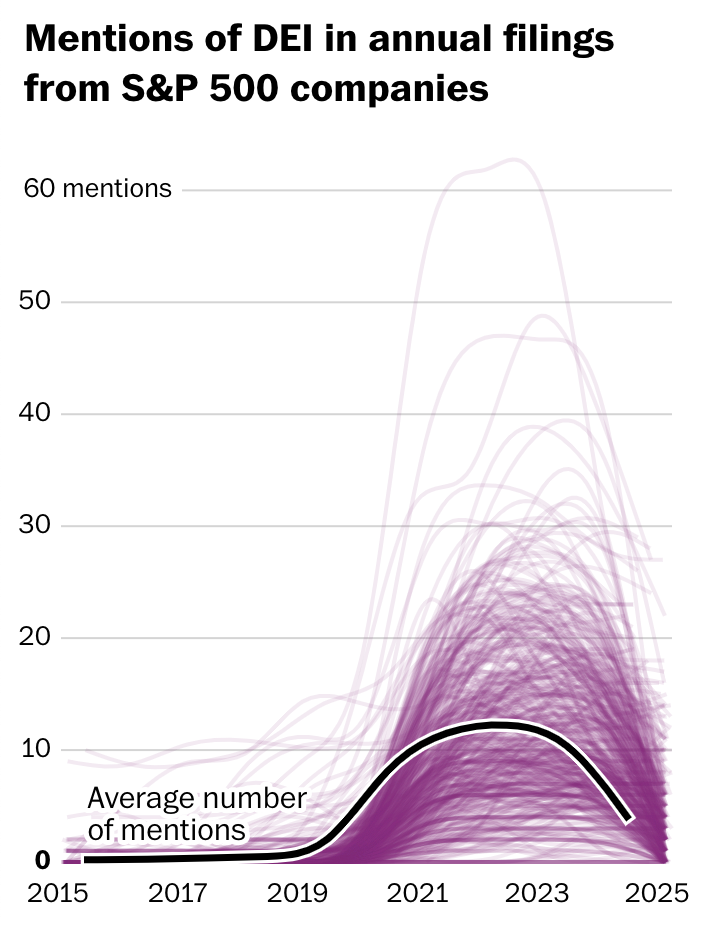Corporate Diversity Fades: How 'DEI' Disappeared from the Business Landscape

In a striking shift of corporate narrative, recent analysis of S&P 500 companies' annual 10-K reports indicates a significant decline in discussions surrounding diversity, equity, and inclusion (DEI) since the pivotal year of 2020. This trend suggests a potential cooling of corporate commitment to workplace diversity in the aftermath of heightened social justice conversations and racial reckoning that characterized the early stages of the pandemic era.
The sharp reduction in DEI references marks a notable departure from the momentum gained in previous years, when companies were increasingly vocal about their efforts to create more inclusive and equitable work environments. What was once a prominent topic of corporate discourse now appears to be receiving less attention in official corporate documentation.
This trend raises important questions about the sustainability of corporate diversity initiatives and whether the intense focus on DEI during 2020 was a momentary response to social pressures or a genuine, long-term commitment to organizational transformation.
